Ditapis dengan
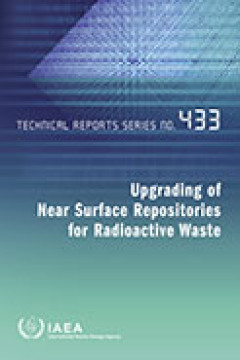
Upgrading of Near Surface Repositories for Radioactive Waste | Technical Repo…
This report considers a variety of circumstances that may require corrective actions to be assessed or implemented at near surface disposal facilities. The circumstances leading to the corrective actions, or the corrective actions themselves, may be of either a technical or a non-technical nature. Methodologies that can be employed to implement effective solutions to problems are discussed, inc…
- Edisi
- 433
- ISBN/ISSN
- 92-0-112704-9
- Deskripsi Fisik
- 137 p. : Illus. 24 cm
- Judul Seri
- Technical Reports Series No. 433
- No. Panggil
- 621.4838 IAE U
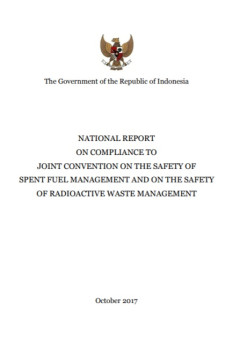
National Report on Compliance to Joint Convention on The Safety of Spent Fuel…
This is the third National Report by the Republic of Indonesia. As reported in previous National Report and Review Meeting, the decision of the Government of the Republic of Indonesia to ratify “the Joint Convention on the Safety of Spent Fuel Management and on the Safety of Radioactive Waste Management”, as ratified by the President Regulation No. 84/2010 on 28 December 2010, clearly demon…
- Edisi
- -
- ISBN/ISSN
- -
- Deskripsi Fisik
- 37p;Illus
- Judul Seri
- -
- No. Panggil
- 363.6
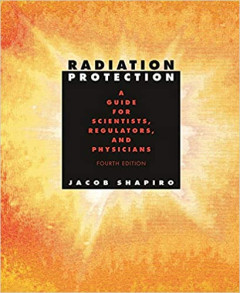
Radiation Protection: A Guide for Scientists, Regulators, and Physicians, Fou…
This highly successful manual has served for nearly three decades as the definitive guide to the safe use of radioactive materials. Completely revised and updated, the fourth edition presents a new dimension by adding coverage of nonionizing radiation, and is thus concerned with the entire field of radiation protection. The author takes the novel approach of introducing the whole range of en…
- Edisi
- -
- ISBN/ISSN
- 0674007409
- Deskripsi Fisik
- xxiv, 663 p. : Illus. ; 24 cm
- Judul Seri
- -
- No. Panggil
- 616 SHA r
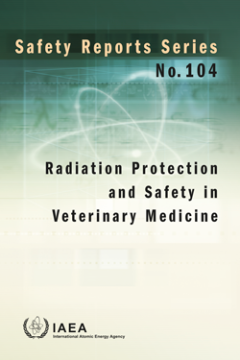
Radiation Protection and Safety in Veterinary Medicine (Safety Reports Series…
This Safety Report provides guidance on the safe use of radiation for imaging and treatment in veterinary medicine with the objective of ensuring the safety and radiation protection of workers and members of the public. The publication addresses occupational exposure and public exposure in the use of radiation in veterinary medicine and safety issues that should be considered in order to be com…
- Edisi
- -
- ISBN/ISSN
- 978-92-0-107319-8
- Deskripsi Fisik
- 186 hal
- Judul Seri
- -
- No. Panggil
- 616.07570289 IAE R
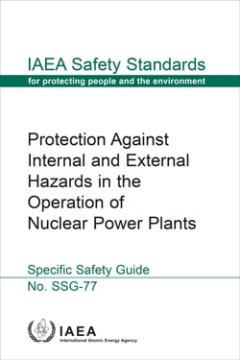
Protection Against Internal and External Hazards in the Operation of Nuclear …
This Safety Guide provides specific recommendations on protection against internal and external hazards in the operation of nuclear power plants. It provides new or updated recommendations derived from enhanced understanding of operational aspects of hazards and combinations of hazards. Operating experience gained from incidents and accidents in nuclear power plants around the world has demonst…
- Edisi
- -
- ISBN/ISSN
- 978–92–0–101522–8 (pdf)
- Deskripsi Fisik
- 83 p
- Judul Seri
- IAEA safety standards series
- No. Panggil
- 621.039.58 IAE p
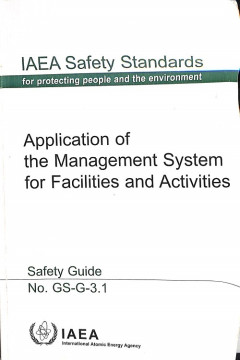
Application of the Management System for Facilities and Activities, Safety Guide
This publication provides guidance for following the requirements for management systems that integrate safety, health, security, quality assurance and environmental objectives. A successful management system ensures that nuclear safety matters are not dealt with in isolation but are considered within the context of all these objectives. The aim of this publication is to assist Member States to…
- Edisi
- -
- ISBN/ISSN
- -
- Deskripsi Fisik
- 105 p. : Illus. ; 24 cm
- Judul Seri
- Safety Standards Series No. GS-G-3.1
- No. Panggil
- 633.10486IAE A
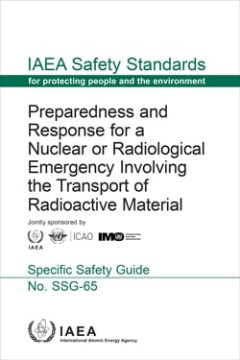
Preparedness and Response for a Nuclear or Radiological Emergency Involving t…
Radioactivity is a natural phenomenon and natural sources of radiation are features of the environment. Radiation and radioactive substances have many beneficial applications, ranging from power generation to uses in medicine, industry and agriculture. The radiation risks to workers and the public and to the environment that may arise from these applications have to be assessed and, if necessar…
- Edisi
- -
- ISBN/ISSN
- 978–92–0–127621–6
- Deskripsi Fisik
- 91 p
- Judul Seri
- IAEA safety standards series
- No. Panggil
- 614.876 IAE p
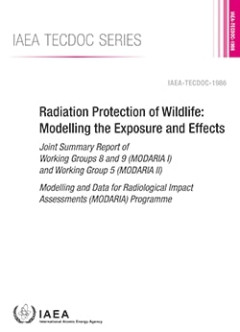
Radiation Protection of Wildlife: Modelling the Exposure and Effects, IAEA TE…
In recent years there has been a rapid development in models and approaches to assess whether the environment (or wildlife) is protected from releases of radioactive material. Through the Environmental Modelling for Radiation Safety (EMRAS and EMRAS II) and Modelling and Data for Radiological Impact Assessments (MODARIA I and MODARIA II) programmes, the IAEA has facilitated knowledge sharing on…
- Edisi
- -
- ISBN/ISSN
- 978-92-0-138021-0
- Deskripsi Fisik
- 89 p
- Judul Seri
- IAEA TECDOC series
- No. Panggil
- 614.715 IAE r
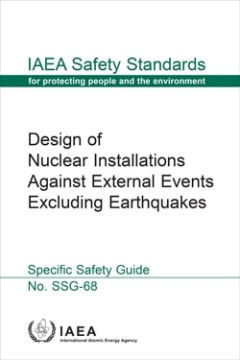
Design of Nuclear Installations Against External Events Excluding Earthquakes…
The status of the IAEA safety standards derives from the IAEA’s Statute, which authorizes the IAEA to establish or adopt, in consultation and, where appropriate, in collaboration with the competent organs of the United Nations and with the specialized agencies concerned, standards of safety for protection of health and minimization of danger to life and property, and to provide for their appl…
- Edisi
- IAEA Safety Standards Series.
- ISBN/ISSN
- 978-92-0-136121-9
- Deskripsi Fisik
- 112 p
- Judul Seri
- IAEA Safety Standards Series.
- No. Panggil
- 621.039.58 IAE d
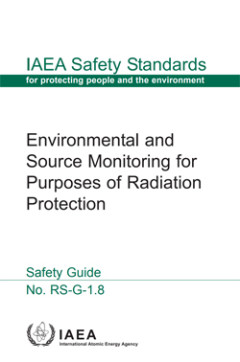
Environmental and Source Monitoring for Purposes of Radiation Protection - IA…
The purpose of this Safety Guide is to provide international guidance, coherent with contemporary radiation protection principles and IAEA safety requirements, on the strategy of monitoring in relation to: (a) control of radionuclide discharges under practice conditions, and (b) intervention, such as in cases of nuclear or radiological emergencies or past contamination of areas with long lived …
- Edisi
- -
- ISBN/ISSN
- 92-0-113404-5
- Deskripsi Fisik
- 119 pages
- Judul Seri
- -
- No. Panggil
- -
 Karya Umum
Karya Umum  Filsafat
Filsafat  Agama
Agama  Ilmu-ilmu Sosial
Ilmu-ilmu Sosial  Bahasa
Bahasa  Ilmu-ilmu Murni
Ilmu-ilmu Murni  Ilmu-ilmu Terapan
Ilmu-ilmu Terapan  Kesenian, Hiburan, dan Olahraga
Kesenian, Hiburan, dan Olahraga  Kesusastraan
Kesusastraan  Geografi dan Sejarah
Geografi dan Sejarah